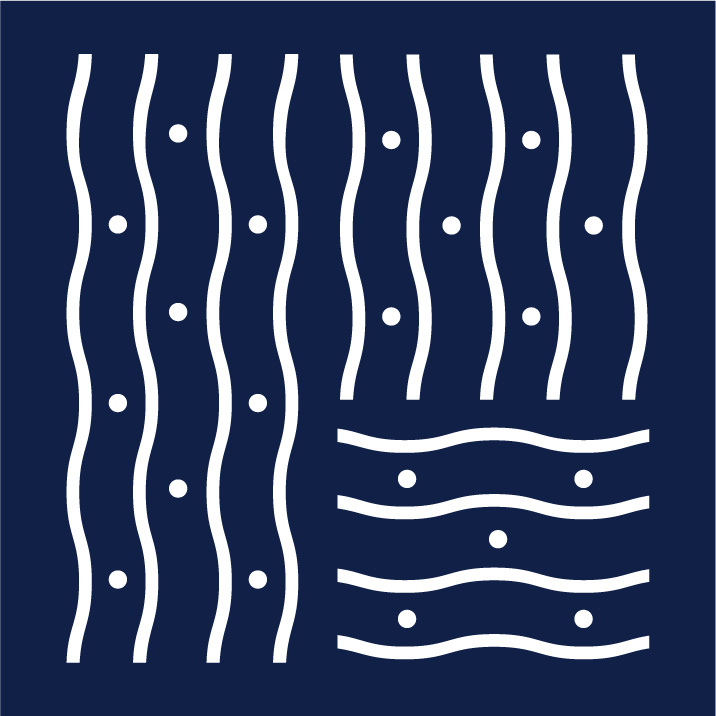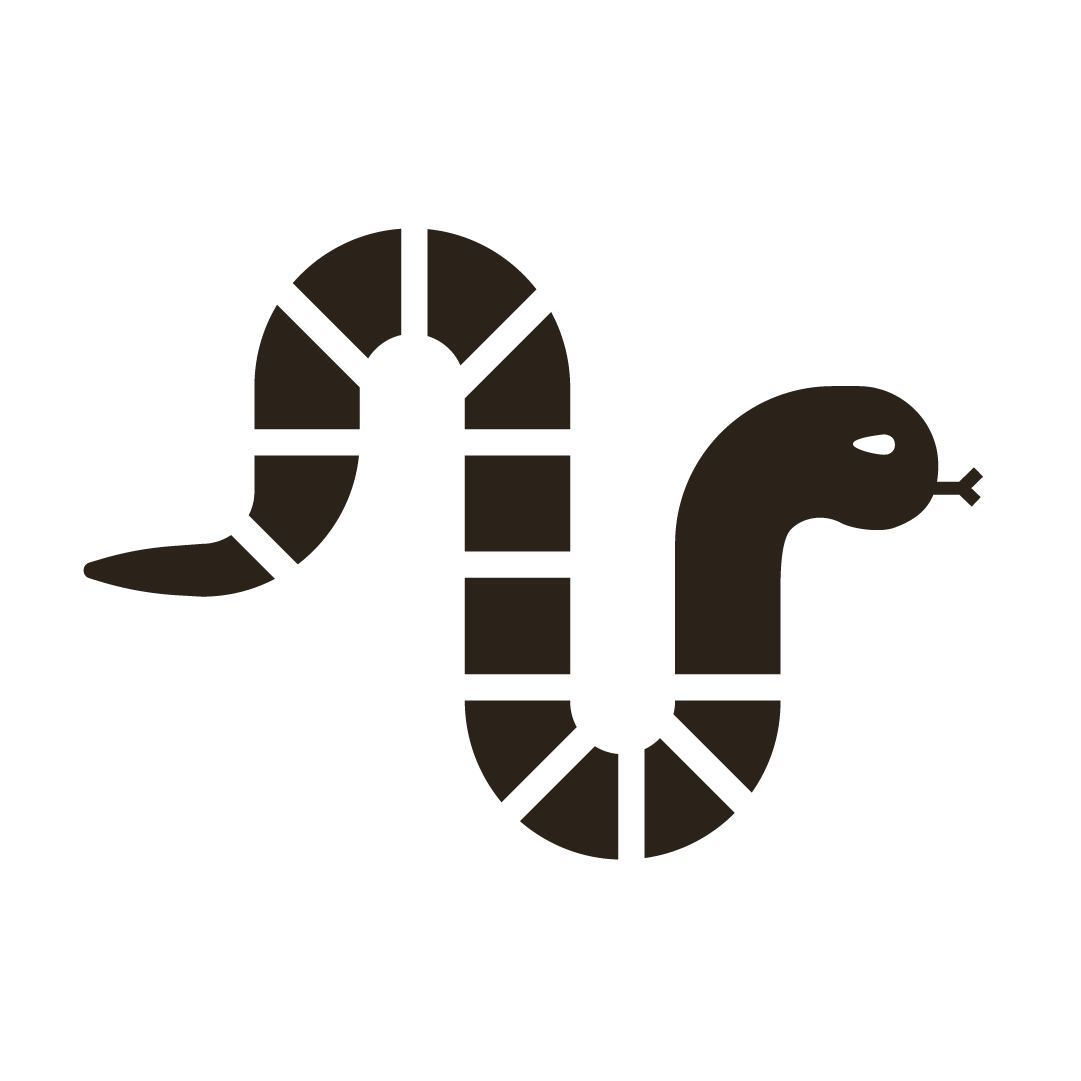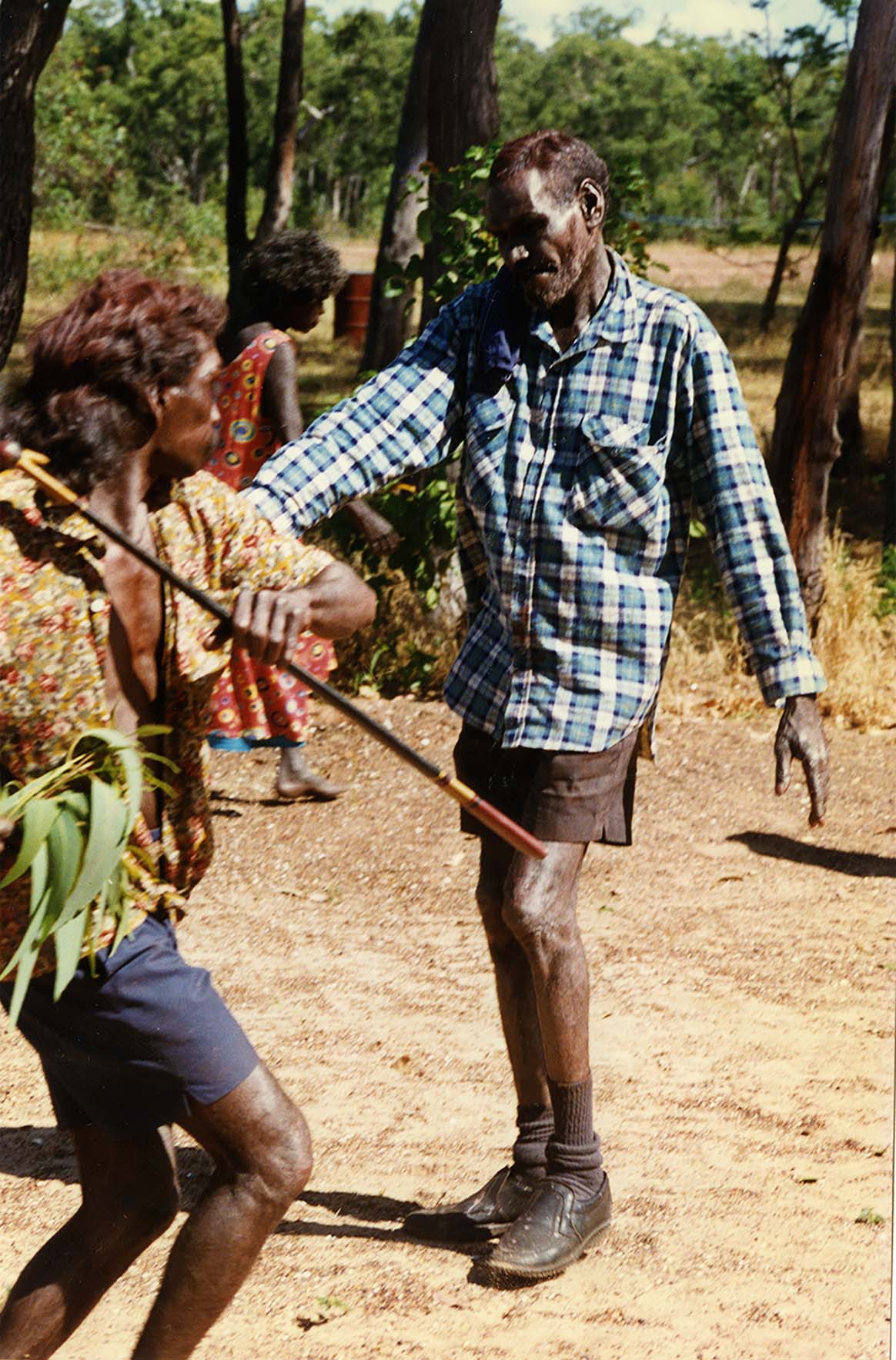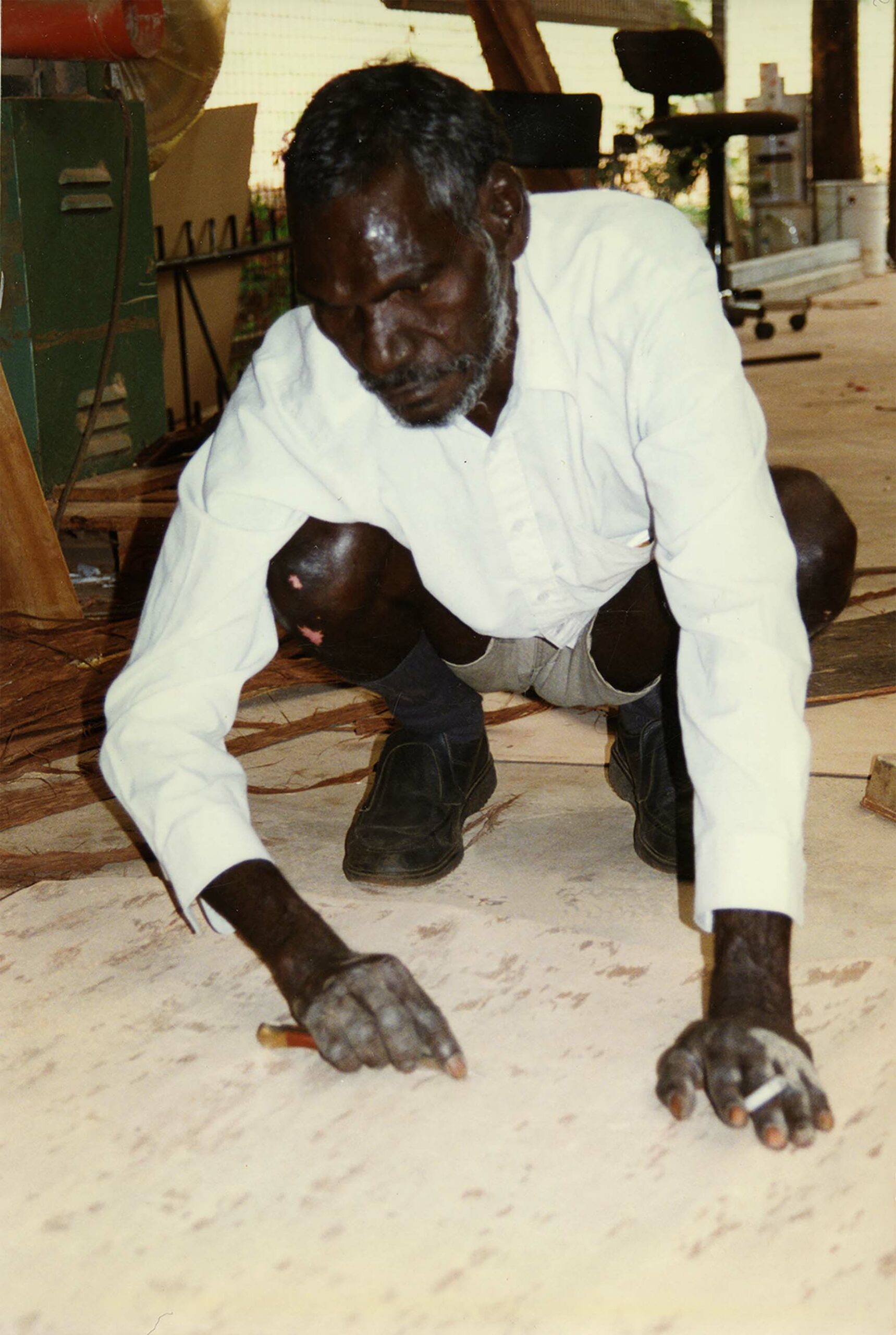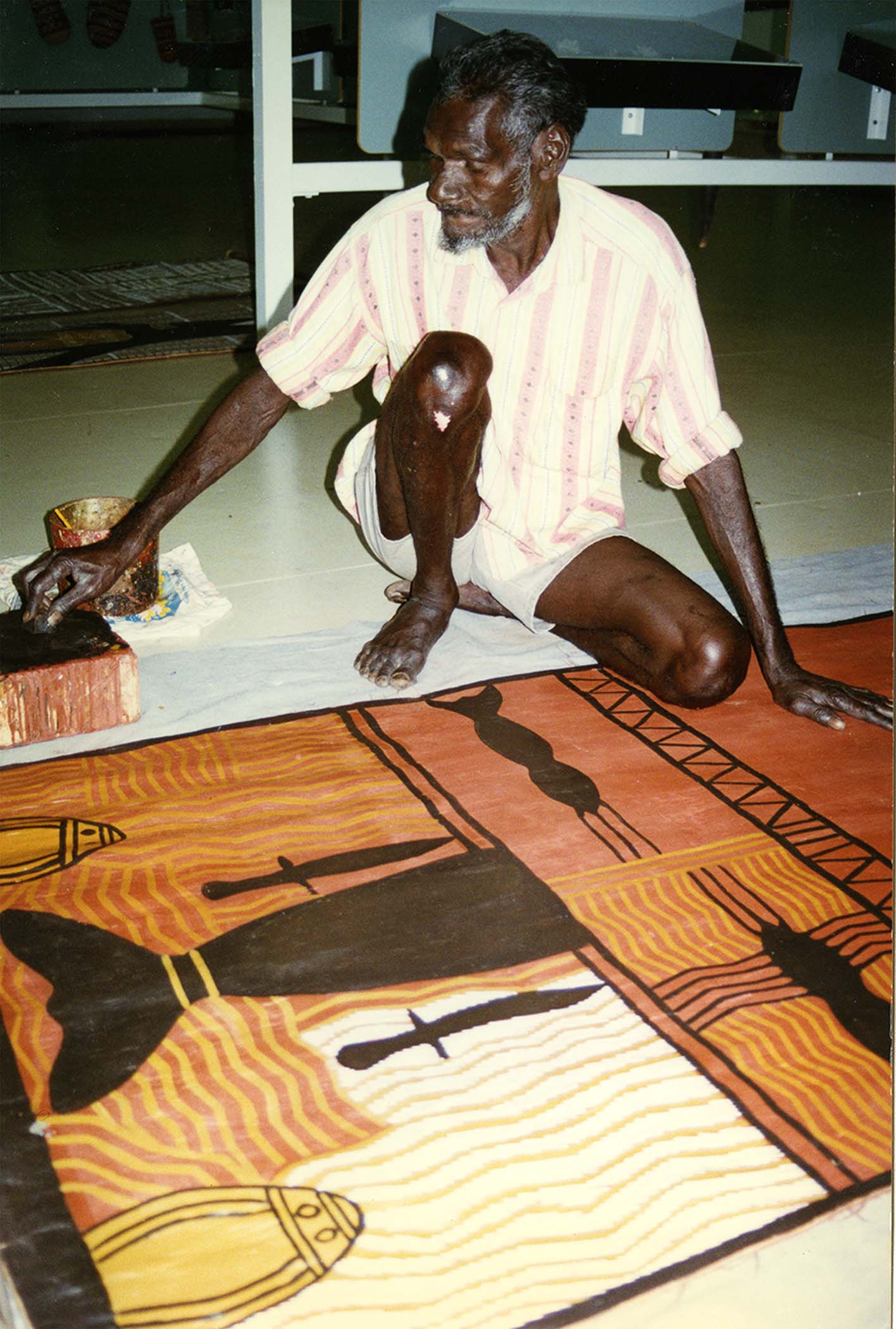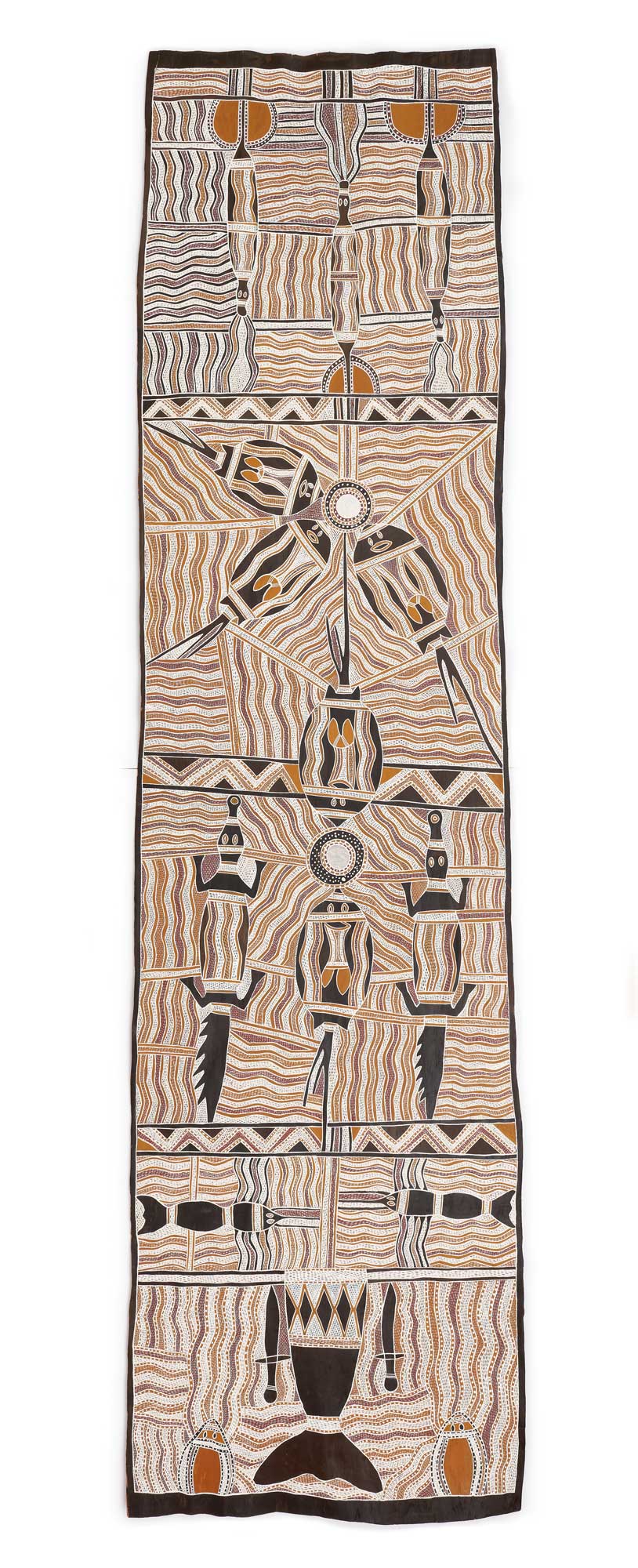
"In ceremony we can sing, dance and cry all the things in this painting. If somebody dies who belongs to Munyuku clan we paint the knife or the whale’s tail on our stomach showing that that child came from Munyuku. "
– ḎULA ŊURRUWUTTHUN
More Info
This painting depicts the relationship between several Yirritja clans, connected as märi (grandmother) and gutharra in the Yolŋu kinship system.
In the top panel, Gambili shows Gayitj (the Lightning Serpent also known as Burrut’tji), who lives in the fertile area of Maywundji, where the freshwater coming down to meet the natural dry season barriers of sand bars that halt tidal surge. On tasting the influx of freshwater coming down from the sacred lands, Gayitj stands up on its tail from its hole to herald the event by spitting lightning into the skies.
Maywundji is a region shared by both the Maŋgalili and Munyuku clans. In the central panels are the ancestral crocodile Bäru and the stingray Gawaŋalkmirri, totems of the Yarrwidi Gumatj clan. Below them is the Munyuku saltwater estate of Yarrinya indicated by the tail of the ancestral whale Mirrinyuŋu.
In ancestral times, a whale called Mirinyuŋu was living in the ocean at Yarrinya. The whale, being Munyuku, was in its own country. Munyuku spirit men called Wurramala or Matjitji lived and hunted in this country. According to Yolŋu kinship classifications, the whale is the "brother" of these men. They killed their brother Mirinyuŋu, who eventually washed up onto the beach, contaminating it with blood and fat turning putrid.
This is how the Wurramala found the whale on the beach. They used stone knives, Garapana. The tail severed from its body, the men then cut the body of the whale into long strips. In (self-)disgust they then threw the knives out to sea. This formed a dangerous and potent hidden reef of the same name. Within the design are the bones of the whale on the beach made sacred with the essence of Mirinyuŋu. The directions of the bands of miny’tji (sacred clan design) relate to the sacred saltwater of Yarrinya, the chop on the surface of the water and the ancestral powers emanating from it.
The whale’s tail is seen as raŋga, (a sacred ceremonial object). The bones of the whale are also said to have become a part of the rocks in the ocean. Bones are thought of as the essence of a person. The rock and the whale are combined in a spiritual manner which is extremely significant to Munyuku people.
– Buku-Larrŋgay Mulka Centre
Additional Information
Decade
1996
Medium
Natural pigments on eucalyptus bark
Dimensions (IN)
143 ½ x 39 ½
Dimensions (CM)
364.5 x 100.3
Credit
Kluge-Ruhe Aboriginal Art Collection of the University of Virginia. Gift of John W. Kluge, 1997. 1996.0035.027
Narrative
Munyuku
The Munyuku clan belongs to the Yirritja moiety. Major spiritual themes relate to marine life...
Songline
Mirinyuŋu | The Whale
During the Waŋarr, two spirit men from the Munyuku clan hunted and killed a whale...
Songline
Burrut’tji | Lightning Snakes
Burrut’tji is the name for Lightning Snakes. There are several Lightning Snakes, belonging to different...
Location
1990s
Buku-Larrŋgay Mulka Centre began the 1990s in a phase of rebuilding. By the end of...
About The Artist(s)
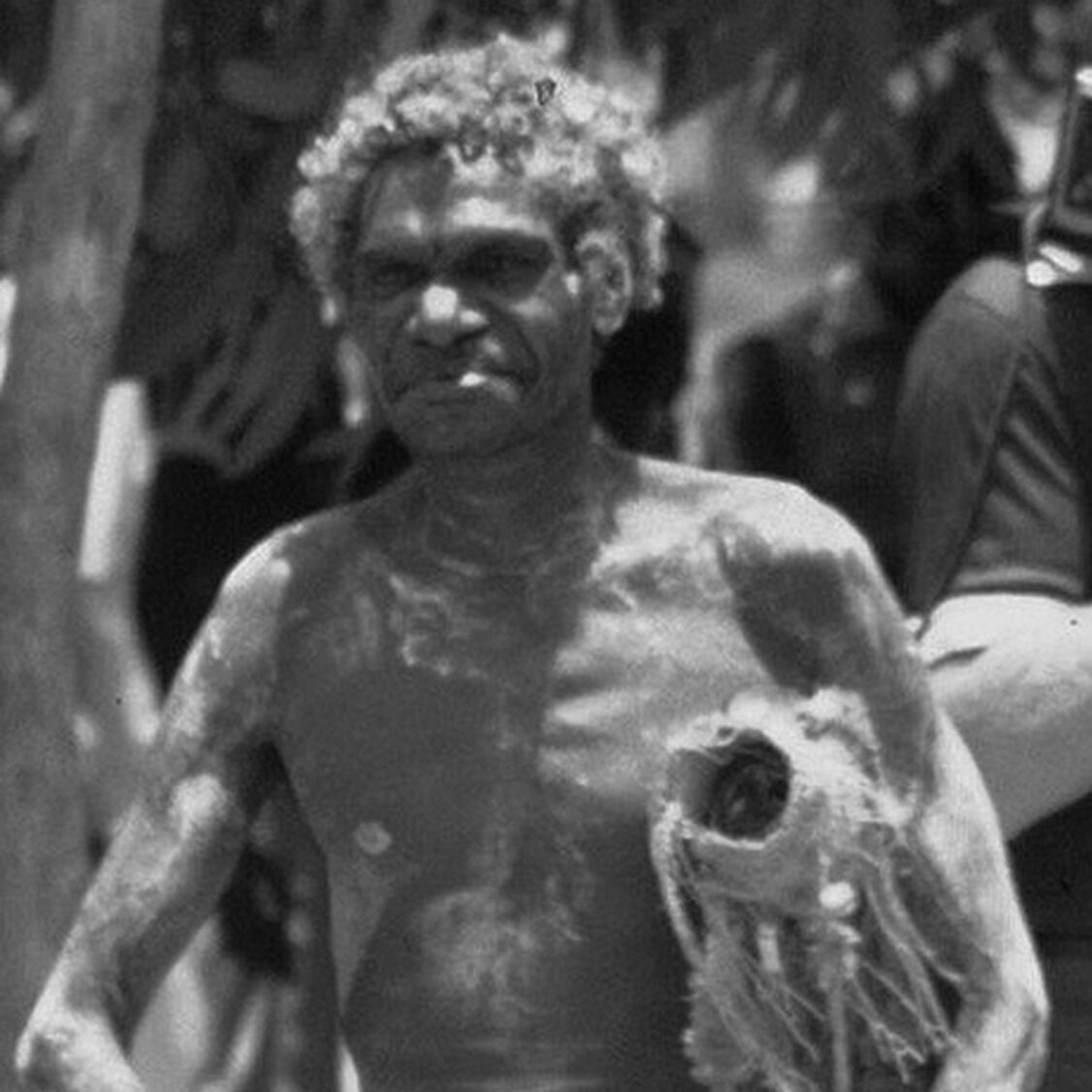
Clan
Munyuku
Artist Dates
c.1938-2001
Gambali Ŋurruwutthun
Along with his brother Ḏula Ŋurruwutthun, Gambali Ŋurruwutthun inherited the mantle of djirrikay (ritual specialist) from his father, Djimbaryun Ŋurruwutthun. His extensive ceremonial responsibilities left Gambali little time to paint. He created monumental paintings for the commissions of the National Gallery of Victoria (1994) and John W. Kluge (1996), but it would take him nearly three years to complete his final major work.
